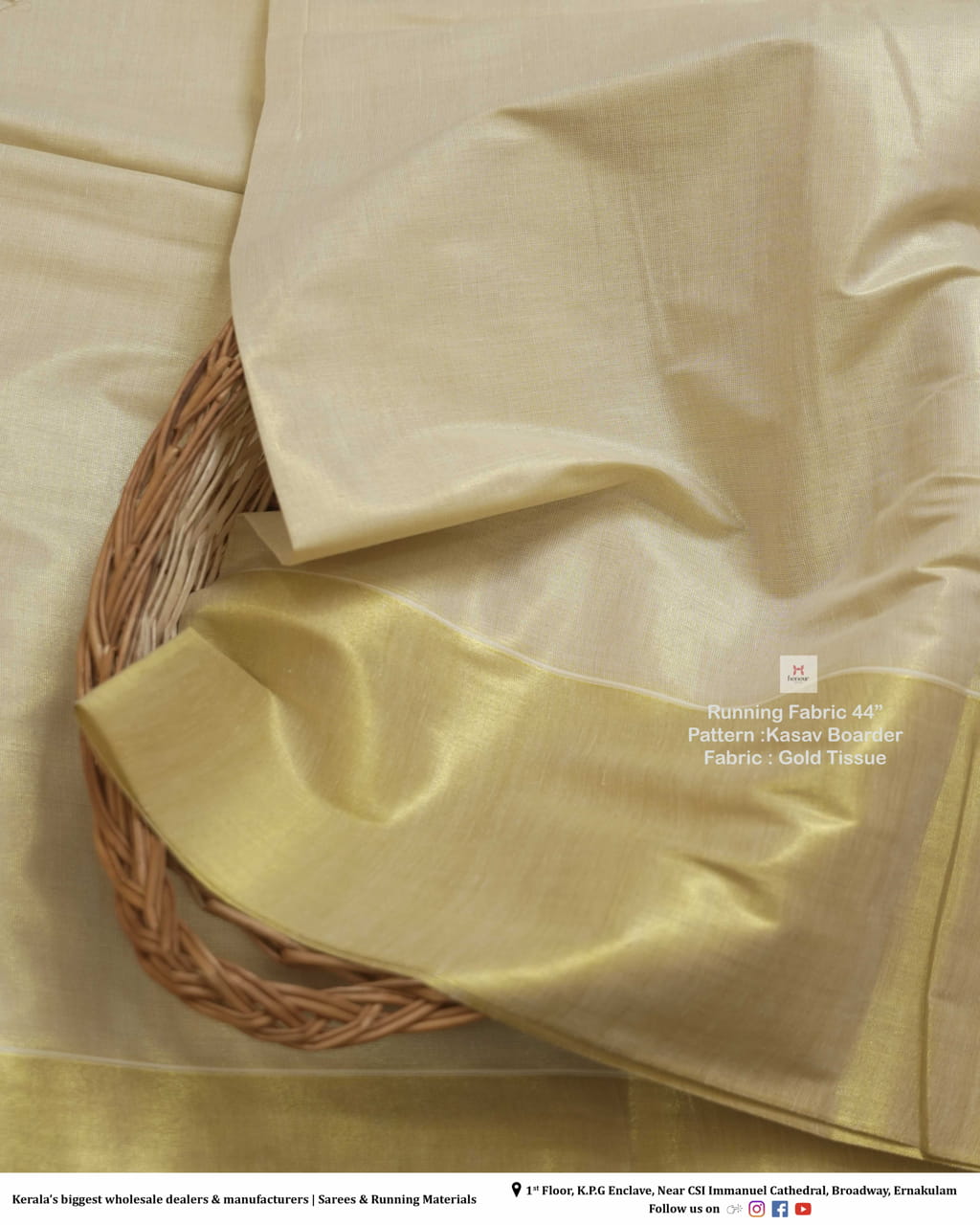 Running Material
Running MaterialAre you curious about Kasavu running material? In this blog, we will guide you through its rich history, cultural significance, and modern applications in ethnic fashion. From its traditional roots in Kerala to its contemporary twists, you’ll understand why this beautiful handloom fabric remains relevant today. You'll learn how to incorporate Kasavu into your wardrobe and discover its growing appeal in sustainable fashion.
The Rich Heritage of Kasavu
Kasavu running material is more than just fabric; it’s a symbol of cultural identity, especially in Kerala. Originating from the scenic state in India, Kasavu represents the heart of Kerala’s textile tradition. It is characterized by a cream or off-white base paired with a striking golden border, a design that epitomizes grace and elegance.
This traditional fabric is primarily used in sarees and has held an important place in celebrations, festivals, and religious ceremonies across the subcontinent. The golden border is not merely decorative; it represents dignity and pride, giving wearers an effortless elegance that resonates through generations.
Technique Meets Tradition
Creating Kasavu running material involves meticulous craftsmanship where traditional methods reign supreme. Artisans handcraft each piece using time-honored weaving techniques that have been passed down through generations. The origin of its raw materials, typically sourced from locally grown fibers, further underscores the authenticity and quality of this traditional Kerala textile.
Local craftsmen play a vital role in preserving the art of handloom weaving, showcasing their skills and dedication in every inch of fabric. This commitment not only enhances the significance of the material but also supports local economies and sustainable practices.
Reviving Kasavu for Contemporary Audiences
In recent years, there has been a resurgence of interest in Kasavu running material among younger generations. Fashion designers are innovating by incorporating modern twists to this age-old textile, making it appealing for casual and formal events alike. From stylish dupattas to chic lehengas, Kasavu is being reinvented to resonate with contemporary audiences without losing its traditional essence.
This resurgence has resulted in fashionable fusion wear that combines Kasavu with other fabrics and styles, making it versatile for everyday wear. These innovative designs promote a broader acceptance of ethnic fashion beyond the conventional saree, allowing individuals to express their unique style.
Accessorizing and Coordinating
Color coordination is key when styling Kasavu. Pair it with contrasting hues that pop or earthy tones that allow the fabric to shine. Layering can further enhance the look; consider a stylish cape or an embroidered jacket to add depth while maintaining a chic aesthetic. Mixing Kasavu with other handloom fabrics can also create a fresh look that celebrates your personal style.
Sustainability and Global Appeal
As sustainability becomes a cornerstone of modern fashion, Kasavu running material is well-positioned to thrive in this new landscape. Handloom weaving is a sustainable practice that allows for less environmental impact compared to mass production. As a growing number of consumers embrace eco-friendly choices, the allure of traditional textiles like Kasavu is set to rise.
The increasing popularity of Kasavu running material extends beyond the borders of India, resonating globally with those who appreciate not just ethnic fashion but also its sustainable nature. The fabric is becoming favored among not only the Indian diaspora but also international fashion enthusiasts who value quality and craftsmanship.
We hope this blog has deepened your appreciation for Kasavu running material! Have you incorporated this beautiful fabric into your wardrobe? What styling tips do you have? We would love to hear your thoughts! Share your experiences or unique fashion insights in the comments below. Don’t forget to share this blog with friends or on social media to spread awareness about this remarkable traditional Kerala textile!










Or login with